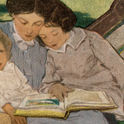It wasn’t exactly Baghdad, April 2003, but the toppling of a statue in Bristol this weekend feels like an important symbolic moment. A small group of citizens, cheered on by many more, brought down the statute of a 17th-century slave trader and hurled it into the floating harbour.
A lot has changed since it was erected 125 years ago. No decent Bristolian would possibly agree with the original plaque that called Colston “one of the most virtuous and wise sons of their city.” But until this week it was still widely acceptable to think his bronze likeness and those of others like him should remain as part of the city’s heritage. No more. Every monument to a shameful past will now have to justify its continued maintenance or make way for something more edifying.
Typically, I find myself unable to back either side in this debate entirely, giving the topplers of Colston one and a half cheers. The full hurrah is for the drive to make our public spaces more diverse in who they celebrate and remember. One of my lockdown walks was a statue tour of Bristol and it is striking that even in this most progressive of cities, effigies of dead, white, privileged men still dominate. The creators of the tour booklet tried not to draw too much attention to this, making sure they included most of the exceptions, namely a farmer and miner, a nameless refugee, Queen Victoria and the 19th-century Indian thinker, reformer and diplomat Raja Ram Mohan Roy.
Caroline Criado Perez’s campaign for a statue of Millicent Fawcett in Parliament Square can be credited with putting the issue of who gets memorialised in public on the agenda. In 2018, the database of The Public Monuments and Sculpture Association (PMSA) contained 828 statues in the UK, only 174 of which were of women. What’s more, 66 of these were of allegorical or fictional characters, such as Bristol’s Nine Muses and Minerva, Goddess of Wisdom. Incredibly, by my count, Bristol’s only memorials to people of colour apart from Roy are a Sikh soldiers memorial and a bridge named after a slave, Pero.
Public monuments reflect our civic values and it can’t be right that they are so dominated by white men. Nor can we stuff every corner with new monuments to correct the imbalance. Some of the old ones have to go and those that have little artistic merit and venerate dubious characters should be at the front of the queue. It is difficult to argue with mayor Mervin Rees, who is of Jamaican heritage, when he said “I cannot pretend that I have any real sense of loss for the statue, and I cannot pretend it was anything other than a personal affront to me to have it in the middle of Bristol, the city in which I grew up.”
However, Rees, like Keir Starmer, was careful not to condone lawlessness. The rule of law does matter and we should always be wary of cheering on those who ignore it. And yet Priti Patel’s condemnation of the toppling as “utterly disgraceful’ is far too strong. There is a long and proud tradition of civil disobedience which is justified when it is open, proportionate, for a just goal and a last resort. These conditions were arguably met on Sunday. Historian Kate Williams’s twitter thread is a concise primer on why the argument that protestors should have used lawful means rings hollow. People have been trying to either remove the statue or put it in a more accurate historical context for years, always hitting a brick wall. So although I’m uneasy with the vigilantism, I’m prepared to give the benefit of the doubt.
There is, however, one aspect of the protest that I cannot support. Many of those who brought down Colston also want to remove his name and those of others like him from the streets and buildings of Bristol. The music venue Colston Hall had already said that it will be renamed after its major rebuilding. (Should this be a corporate sponsor, as seems likely, the decision may end up looking more pragmatic than principled.) But that leaves much, much else, including the university’s Wills Memorial Building, named after the Victorian tobacco magnate Henry Overton Wills III, and Cabot Circus, a shopping centre opened in 2008 named after the first European to reach the coast of North America, Giovanni Caboto, aka John Cabot. Cabot was no villain but he paved the way for colonialists and slave traders, while the tobacco industry was run on slavery and killed countless people.
As someone who has lived in Bristol for nearly two decades, these names are not daily reminders of past glories but of the historical shames that lie behind the success of the city today. They are a prophylactic against smug middle-class complacency that would celebrate the diversity of Bristol while ignoring its dark underbelly.
Such reminders are needed because they point to injustices that are all too present. White Bristolians might love jerk chicken and the St Paul’s Carnival but Bristol is not a multicultural success story. A 2017 Runnymede Trust report showed that “Ethnic minorities in Bristol experience greater disadvantage than the national average in education and employment.” The most affluent areas of Bristol remain around 90 per cent white or more, with most of the city's BAME population concentrated in half a dozen wards. Lawrence Hill, which is nearly 60 per cent non-white, has the city’s highest death rate, the fourth highest crime rate, the fourth lowest educational attainment rate, by far the highest home overcrowding and the lowest car ownership.
I’d like to see more buildings and streets named after people like George Floyd and the leaders of the 1963 Bristol Bus Boycott, Roy Hackett, Owen Henry, Audley Evans and Prince Brown, who led the protests against the Bristol Omnibus Company’s refusal to employ black or Asian crews. But if we also remove our more problematic names we risk indulging our self-satisfied image of a rainbow city instead of acknowledging the racism that persists.
Smashing up statues and decrying dead Victorians risks becoming part of this comforting narrative. Ironically, it involves a version of the “othering” that powers much racism. Instead of recognising that Cabot, Colston, Wills et al were not inherently evil but products of their time, we demonise them, seeing nothing of ourselves in them. That is not the way to confront the deep-seated racism that decades of campaigning has not erased. When we see Colston we should see not a historical relic but ourselves. The injustices and prejudices that directed his life shaped our city and still have consequences. All the time racial injustice remains a reality, white Bristolians like me need reminders of the deep and many layers of privilege and prejudice that exist. We need to be kept uncomfortable.













